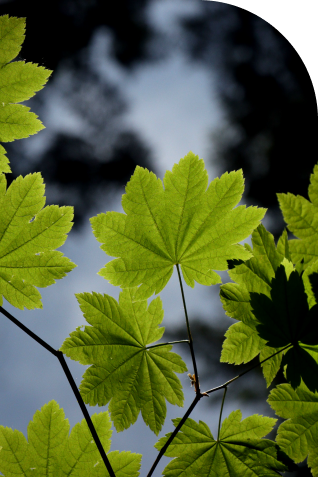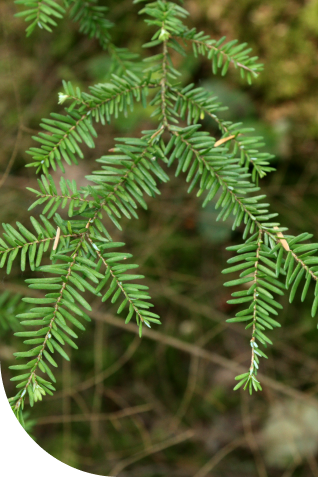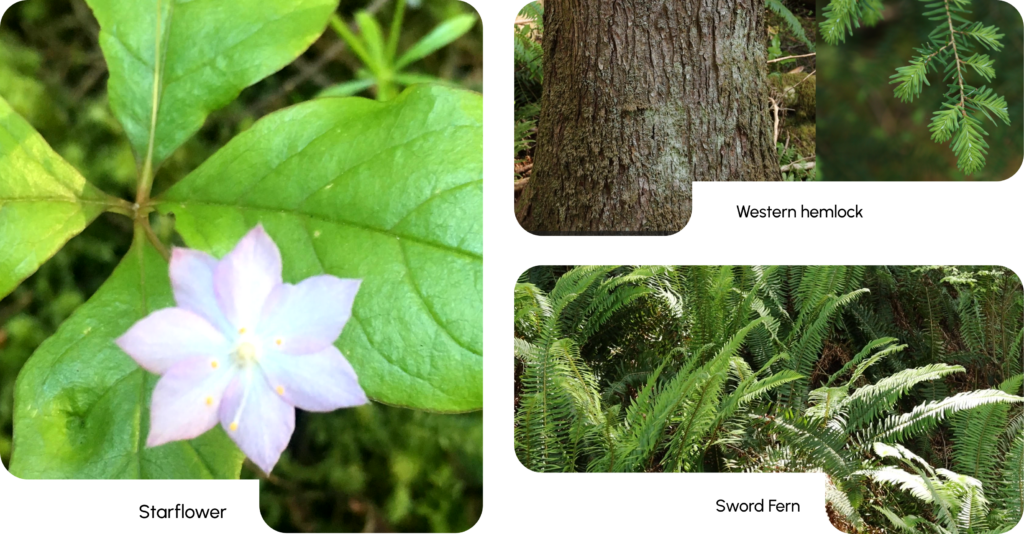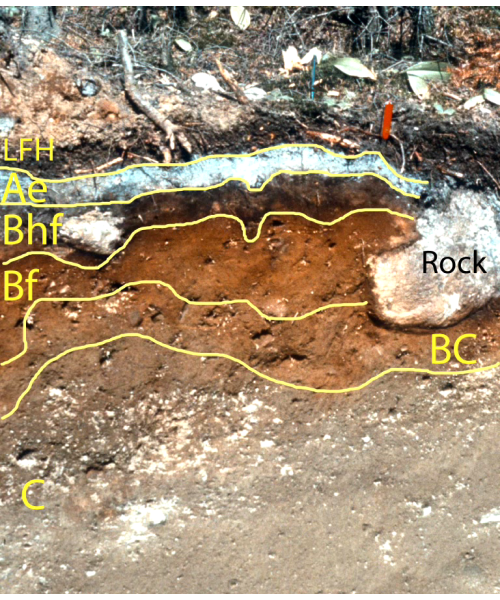Comparison of Soils and Vegetation
Within the Coastal Western Hemlock zone, there are 10 different subzones which capture the diversity of conditions across the region. Each subzone is named based on its proximity to the ocean and its relative level of precipitation. Within each subzone, there are also variations across sites. There are upper slope sites that tend to shed water and be a little bit drier, midslope sites that tend to have moderate moisture (also known as mesic) conditions and lower slope sites that tend to be wetter. We will look at the variation of these conditions across one particular subzone, the Coastal Western Hemlock dry maritime or CWHdm. The CWHdm tends to be more mild and slightly drier than many of the other CWH subzones.
Zonal sites in the CWHdm

On sites that are well to moderately well drained, middle slopes and gently sloping heights of land you will find the Western hemlock — Flat moss plant association. The soils on these sites tend to be moderate in terms of their soil moisture and nutrient levels, which is what is known as a zonal site. Compared to other sites, there are neither significant losses nor additions of moisture and nutrients, which means the climate of the zone is reflected best at these sites. The Western hemlock — Flat moss association and soils are considered the zonal ecosystem for the CWHdm subzone.

Mature stands of the Western hemlock — Flat moss have abundant Douglas-Fir, Western Hemlock, and Western Red Cedar. In densely planted forest stands, the shrub layer is usually poorly developed with few plants, but there is usually regeneration of western hemlock growing in the understory. In areas with more light reaching through the canopy, you will find Vine Maple (Acer circinatum), salal (Gaultheria shallon), Dull Oregon Grape (Mahonia nervosa), and Red Huckleberry (Vaccinium parvifolium). There are few herbs to be found, but occasionally you will see Twinflower (Linnaea borealis), Sword Fern (Polystichum munitum), Trailing Blackberry (Rubus ursinus), and Broad-leaved Starflower (Trientalis latifolia). The moss layer is well developed, featuring Oregon Beaked Moss (Kindbergia oregana) and Step Moss (Hylocomium splendens), Lanky Moss (Rhytidiadelphus loreus), and Flat Moss (Plagiothecium undulatum).


Soils
The soils of the Western hemlock — Flat moss association tend to be very similar to the slightly drier soils of the Douglas-fir — Western hemlock — Salal. They are both nutrient-very poor to -medium soils, but the Western hemlock — Flat moss sites are slightly dry to fresh instead of moderately dry soil moisture regimes. They are both Orthic Humo-Ferric Podzols with Humimor humus forms, but can be slightly deeper soils then the drier sites, which means they are slightly better growing conditions for plants overall.
Orthic Humo-Ferric Podzol. The Bhf (humus-ferric iron) and Bf (ferric iron) horizons are diagnostic of the Podzolic order. © Saskatchewan Centre for Soil Research is licensed under a CC BY (Attribution) license. From Digging into Canadian Soils.



